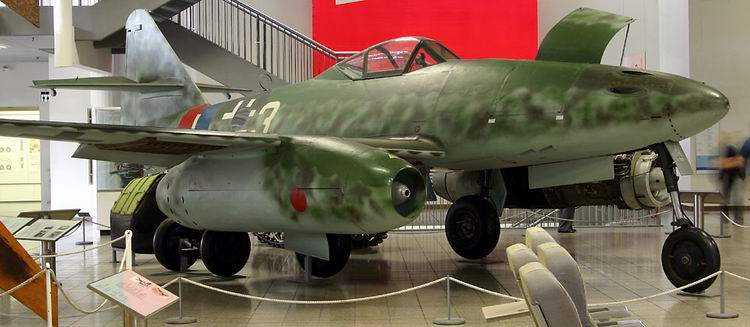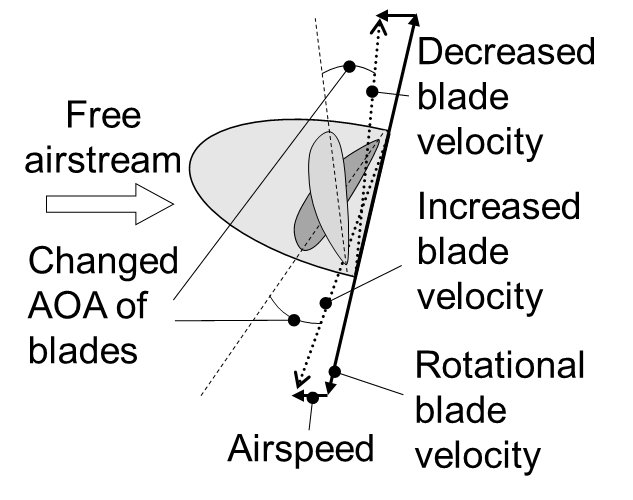|
Conventional Landing Gear
Conventional landing gear, or tailwheel-type landing gear, is an aircraft Landing gear, undercarriage consisting of two main wheels forward of the Center of gravity of an aircraft, center of gravity and a small wheel or skid to support the tail.Crane, Dale: ''Dictionary of Aeronautical Terms, third edition'', page 133. Aviation Supplies & Academics, 1997. From the Ground Up, 27th edition, page 11 The term taildragger is also used. The term "conventional" persists for historical reasons, but all modern jet aircraft and most modern propeller aircraft use tricycle gear. History In early aircraft, a tailskid made of metal or wood was used to support the tail on the ground. In most modern aircraft with conventional landing gear, a small articulated wheel assembly is attached to the rearmost part of the airframe in place of the skid. This wheel may be steered by the pilot through a connection to the rudder pedals, allowing the rudder and tailwheel to move together. Before aircraft ... [...More Info...] [...Related Items...] OR: [Wikipedia] [Google] [Baidu] |
Polikarpov I-15 Bis (num 23) Nosed On The MAKS-2009 (01)
Polikarpov Design Bureau was a Soviet The Union of Soviet Socialist Republics. (USSR), commonly known as the Soviet Union, was a List of former transcontinental countries#Since 1700, transcontinental country that spanned much of Eurasia from 1922 until Dissolution of the Soviet ... OKB (design bureau) for aircraft, led by Nikolai Nikolaevich Polikarpov. Dux Factory was acquired by the USSR and became part of Polikarpov. After the death of Polikarpov on 30 July 1944 at the age of 52, his OKB was absorbed into Lavochkin, but with some of its engineers going to Mikoyan-Gurevich and its production facilities going to Sukhoi. For a long time the Polikarpov OKB headquarters were located at Aircraft plant #1 (formerly Dux Factory) in Moscow, where its purpose-built building still stands. Designs Polikarpov designs: Bombers * TB-2 twin-engined biplane bomber prototype, 1930 * SPB (D) twin-engined dive bomber developed from the VIT-2, 1940 * NB (T) medium bomber pr ... [...More Info...] [...Related Items...] OR: [Wikipedia] [Google] [Baidu] |
Ball-Bartoe Jetwing
__NOTOC__ The Ball-Bartoe JW-1 Jetwing was a US research aircraft flown in the 1970s to investigate blown wing technology. Design and development The Jetwing was a small, mid-wing design powered by a turbofan and fitted with tail-wheel undercarriage. The upper surface of the swept wings incorporated a slot along 70% span, through which air from the engine's fan stage could be discharged. Mounted above this slot was a small secondary airfoil called an "augmentor", intended to direct the discharged airflow over the wing. With this arrangement, it was found that the aircraft remained controllable at airspeeds as low as . The US Navy considered developing the Jetwing for use on short aircraft carriers. A new series of test flights were then carried out. Despite its top speed of 350 mph, the Navy was able to land the Jetwing in a mere 300 feet. Ultimately, the Navy discontinued blown-wing research in favor of vectored thrust technology.https://airfactsjournal.com/2021/02/from-j ... [...More Info...] [...Related Items...] OR: [Wikipedia] [Google] [Baidu] |
Heinkel He 178
The Heinkel He 178 was an experimental aircraft designed and produced by the German aircraft manufacturer Heinkel. It was the world's first aircraft to fly using the thrust from a turbojet engine. The He 178 was developed to test the jet propulsion concept devised by the German engineer Hans von Ohain during the mid-1930s. Having secured the industrial support of Ernst Heinkel, von Ohain was able to demonstrate a working turbojet engine, the Heinkel HeS 1, in September 1937. Heinkel pursued development of the He 178 as a private venture, independent of the German authorities and the Luftwaffe, keeping the aircraft relatively secret for much of its development. Heinkel was keen not only to demonstrate the capabilities of aviation gas turbines, but had a separate emphasis on developing high-speed flight technologies. On 27 August 1939, the He 178 V1, the first prototype, performed its maiden flight, piloted by Erich Warsitz. This flight, which only lasted for six minutes, had ... [...More Info...] [...Related Items...] OR: [Wikipedia] [Google] [Baidu] |
Messerschmitt Me 262
The Messerschmitt Me 262, nicknamed (German for "Swallow") in fighter versions, or ("Storm Bird") in fighter-bomber versions, is a fighter aircraft and fighter-bomber that was designed and produced by the German aircraft manufacturer Messerschmitt. It was the world's first operational jet-powered fighter aircraft and one of two jet fighter aircraft types to see air-to-air combat in World War Two, the other being the Heinkel He 162. The design of what would become the Me 262 started in April 1939, before World War II. It made its maiden flight on 18 April 1941 with a piston engine, and its first jet-powered flight on 18 July 1942. Progress was delayed by problems with engines, metallurgy Metallurgy is a domain of materials science and engineering that studies the physical and chemical behavior of metallic elements, their inter-metallic compounds, and their mixtures, which are known as alloys. Metallurgy encompasses both the ..., and interference from Luftwaffe chie ... [...More Info...] [...Related Items...] OR: [Wikipedia] [Google] [Baidu] |
Elevator (aircraft)
Elevators are flight control surfaces, usually at the rear of an aircraft, which control the aircraft's pitch, and therefore the angle of attack and the lift of the wing. The elevators are usually hinged to the tailplane or horizontal stabilizer. They may be the only pitch control surface present, and are sometimes located at the front of the aircraft (early airplanes and canards) or integrated into a rear "all-moving tailplane", also called a slab elevator or stabilator. Elevator control effectiveness The elevator is a usable up and down system that controls the plane, horizontal stabilizer usually creates a ''downward'' force which balances the nose down moment created by the wing lift force, which typically applies at a point (the wing center of lift) situated aft of the airplane's center of gravity. The effects of drag and changing the engine thrust may also result in pitch moments that need to be compensated with the horizontal stabilizer. Both the horizontal ... [...More Info...] [...Related Items...] OR: [Wikipedia] [Google] [Baidu] |
Jet Blast
Jet blast is the phenomenon of rapid air movement produced by the jet engines of aircraft, particularly on or before takeoff. A large jet-engine aircraft can produce winds of up to as far away as behind it at 40% maximum rated power. Jet blast can be a hazard to people or other unsecured objects, and can reach wind speeds comparable to those of a Category 5 hurricane, causing roof failure or total collapse in buildings, and severely damaging or destroying things like mobile homes, utility buildings, and trees. Despite the power and potentially destructive nature of jet blast, there are relatively few jet blast incidents. Due to the invisible nature of jet blast and the aerodynamic properties of light aircraft, light aircraft moving about airports are particularly vulnerable. Pilots of light aircraft frequently stay off to the side of the runway, rather than follow in the centre, to negate the effect of the blast. Occasionally, when the ground surface is badly chosen, jet bla ... [...More Info...] [...Related Items...] OR: [Wikipedia] [Google] [Baidu] |
Supermarine Attcker FB
Supermarine was a British aircraft manufacturer. It is most famous for producing the Spitfire fighter plane during World War II. The company built a range of seaplanes and flying boats, winning the Schneider Trophy for seaplanes with three consecutive victories (in 1927, 1929 and 1931). After the war, the company produced a series of jet fighters. Overview Supermarine was founded in 1913 as Pemberton-Billing Ltd. The company was located on the River Itchen, Hampshire, River Itchen close to Woolston, Southampton, on ground purchased by the British aviator and inventor Noel Pemberton Billing to construct motor launches. Pemberton-Billing produced two prototype Multiplane_(aeronautics)#Quadruplanes, quadruplanes designed to shoot down Zeppelins—the Supermarine P.B.29 and the Supermarine Nighthawk. Both aircraft were fitted with the recoilless Davis gun. The Nighthawk had a separate Propulsion, powerplant to power a searchlight.The World's Worst Aircraft James Gilbert Pemberton-B ... [...More Info...] [...Related Items...] OR: [Wikipedia] [Google] [Baidu] |
Angle Of Attack
In fluid dynamics, angle of attack (AOA, α, or \alpha) is the angle between a Airfoil#Airfoil terminology, reference line on a body (often the chord (aircraft), chord line of an airfoil) and the vector (geometry), vector representing the relative motion between the body and the fluid through which it is moving. Angle of attack is the angle between the body's reference line and the oncoming flow. This article focuses on the most common application, the angle of attack of a wing or airfoil moving through air. In aerodynamics, angle of attack specifies the angle between the chord line of the wing of a fixed-wing aircraft and the vector representing the relative motion between the aircraft and the atmosphere. Since a wing can have twist, a chord line of the whole wing may not be definable, so an alternate reference line is simply defined. Often, the chord line of the Wing root, root of the wing is chosen as the reference line. Another choice is to use a horizontal line on the fuse ... [...More Info...] [...Related Items...] OR: [Wikipedia] [Google] [Baidu] |
P-factor
Pfactor, also known as asymmetric blade effect and asymmetric disc effect, is an aerodynamic phenomenon experienced by a moving propeller (aircraft), propeller,) wherein the propeller's center of thrust moves off-center when the aircraft is at a high angle of attack. This shift in the location of the center of thrust will exert a yawing moment on the aircraft, causing it to Aircraft principal axes, yaw slightly to one side. A rudder input is required to counteract the yawing tendency. Causes When a propeller aircraft is flying at cruise speed in level flight, the propeller disc is perpendicular to the relative airflow through the propeller. Each of the propeller blades contacts the air at the same angle and speed, and thus the thrust produced is evenly distributed across the propeller. However, at lower speeds, the aircraft will typically be in a nose-high attitude, with the propeller disc rotated slightly toward the horizontal. This has two effects. Firstly, propeller bla ... [...More Info...] [...Related Items...] OR: [Wikipedia] [Google] [Baidu] |
Center Of Gravity Of An Aircraft
The center of gravity (CG) of an aircraft is the point over which the aircraft would balance. Its position is calculated after supporting the aircraft on at least two sets of weighing scale A scale or balance is a device used to measure weight or mass. These are also known as mass scales, weight scales, mass balances, massometers, and weight balances. The traditional scale consists of two plates or bowls suspended at equal d ...s or load cells and noting the weight shown on each set of scales or load cells. The center of gravity affects the stability of the aircraft. To ensure the aircraft is safe to fly, the center of gravity must fall within specified limits established by the aircraft manufacturer. Terminology ;Ballast: Ballast is removable or permanently installed weight in an aircraft used to bring the center of gravity into the allowable range. ;Center-of-Gravity Limits: Center of gravity (CG) limits are specified longitudinal (forward and aft) and/or lat ... [...More Info...] [...Related Items...] OR: [Wikipedia] [Google] [Baidu] |










